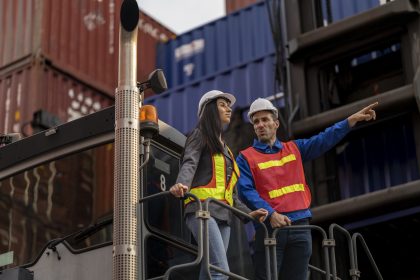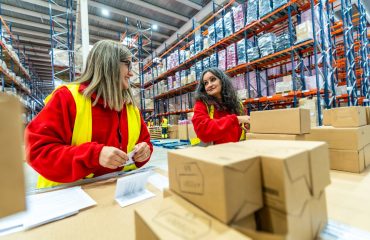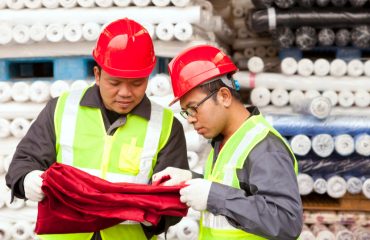
Free Trade Zones (FTZs) play a critical role in driving global economic growth. These designated areas are designed to foster trade by reducing barriers like taxes and tariffs, ultimately boosting exports, creating jobs, and attracting foreign investment. However, while their economic contributions are undeniable, FTZs often come at a steep environmental and social cost. The heavy industry, massive logistics operations, and rapid development associated with FTZs create significant environmental challenges that cannot be ignored.
This blog explores how to achieve sustainability in FTZs and provides actionable strategies for ensuring these zones balance economic benefits with environmental responsibility.
Why Free Trade Zones Are Economic Powerhouses
Trade Facilitation and Efficiency
FTZs simplify international trade by minimizing bureaucratic hurdles, duties, and taxes. Businesses operating in FTZs benefit from streamlined customs processes, duty deferral options, and optimized supply chains that make cross-border trade faster, cheaper, and more efficient. This increased efficiency helps businesses stay competitive in the global market.
Investment Attraction and Job Creation
One of the primary purposes of FTZs is attracting foreign direct investment (FDI). With incentives like tax exemptions, reduced regulatory constraints, and infrastructure support, FTZs are magnets for multinational corporations. The influx of investment translates into substantial job creation, both directly within the zones and indirectly through supporting industries, strengthening local and national economies.
Cost Savings for Businesses
FTZs offer a financial advantage to companies by minimizing production costs and other expenses. These cost savings often stem from reduced import/export duties, less expensive logistics operations, and access to an efficient, centralized supply chain network.
Driving Economic Growth
By increasing exports and fostering regional industrial development, FTZs contribute significantly to national gross domestic product (GDP). For developing countries, FTZs are often seen as vital engines of growth and industrialization, bridging gaps in global trade participation.
The Environmental Shadow of Free Trade Zones
Resource Consumption
The rapid expansion and operations within these special economic zones (SEZs) demand vast amounts of energy and water. Manufacturing, warehousing, and transportation activities rely on consistent supplies, often leading to unsustainable land use changes and habitat destruction.
Pollution and Waste Generation
FTZs contribute significantly to pollution in various forms:
- Air Pollution from vehicle and factory emissions.
- Water Pollution through untreated industrial discharges into nearby water bodies.
- Massive Waste Production from industrial operations, packaging, and, increasingly, electronic waste (e-waste).
FTZs can even become “pollution havens,” attracting businesses seeking to exploit lax environmental regulations.
Carbon Emissions
The global logistics networks connected to FTZs generate enormous carbon footprints. Shipping, air freight, and road transport activities create substantial greenhouse gas (GHG) emissions. Within FTZs, high internal energy consumption further compounds the problem.
Challenges to Environmental Oversight
When it comes to the environmental impact of FTZs, they often face limited or inconsistent regulatory oversight due to jurisdictional complexities. This creates challenges in enforcing environmental compliance, particularly in controlling illegal trade or managing delicate ecosystems near FTZ facilities.
Paving the Green Path: Sustainable Practices for FTZs
Green Infrastructure and Design
FTZs can incorporate sustainable infrastructure to reduce their environmental impact.
- Sustainable Buildings using energy-efficient designs, eco-friendly materials, and natural lighting reduce energy consumption.
- Renewable Energy sources like onsite solar farms, wind turbines, and geothermal energy can power FTZ operations.
- Advanced Waste Management systems like recycling programs and waste-to-energy initiatives can minimize landfill waste.
- Water Conservation measures such as rainwater harvesting and greywater recycling lower the strain on local water resources.
Sustainable Logistics and Supply Chains
Beyond facilitating shipping, FTZs must innovate to promote greener logistics.
- Green Logistics includes adopting electric vehicles, optimizing delivery routes, and using intermodal transport options like rail and sea instead of relying solely on road transport.
- Ethical Sourcing and Packaging involves encouraging tenants to use sustainable materials while minimizing packaging waste.
- Reverse Logistics can create a closed-loop system for product returns, repairs, and recycling, exemplifying circular economy principles.
Policy and Regulatory Frameworks
Strong policies are essential to balance economic development with environmental stewardship.
- Environmental Regulations such as mandatory impact assessments (EIAs) and strict emission standards should be enforced.
- Green Incentives like tax breaks or grants can reward businesses adopting sustainable practices.
- Alignment with Global Goals ensures FTZ policies support commitments to the Paris Agreement and United Nations Sustainable Development Goals (SDGs).
Technological Innovation
Technological advancements offer scalable solutions to sustainability challenges.
- Smart Park Management involves using IoT sensors for real-time monitoring of energy use, water consumption, and waste production.
- Automation and AI optimize operations, reducing errors and resource waste.
- Blockchain Technology enhances supply chain transparency, enabling better tracking of ethical and sustainable goods.
Collaboration and Partnerships
Collaboration is vital for developing and implementing sustainable FTZ practices.
- Public-Private Partnerships between governments, zone operators, and businesses can drive joint sustainability initiatives.
- Community Engagement ensures local populations benefit from FTZ operations while minimizing negative impacts.
- Knowledge Sharing between FTZs allows zones to learn from each other’s successes and shortcomings, accelerating collective progress.
Challenges and Opportunities on the Road Ahead
Challenges
- Upfront Investments in green infrastructure can be a financial barrier.
- Regulatory Complexity complicates environmental enforcement across different jurisdictions.
- Resistance to Change arises from businesses prioritizing short-term profits over long-term sustainability.
- Greenwashing Risks remain, as some businesses superficially adopt sustainable practices without genuine commitment.
Opportunities
- Enhanced Competitiveness as sustainable FTZs increasingly attract responsible investors.
- Improved Brand Reputation for businesses seen as eco-conscious and forward-thinking.
- Long-Term Cost Savings through efficiencies in resource management.
- Contribution to SDGs by directly supporting goals like clean energy, innovation, and responsible consumption.
Explore the Benefits of FTZs with Lean Supply Solutions
Imagine a world where FTZs serve as not just economic hubs but also models of environmental stewardship and social equity. With combined efforts across businesses, governments, and communities, this vision is entirely achievable.
At Lean Supply Solutions, we offer unparalleled Foreign Trade Zone (FTZ) warehousing solutions. With our extensive expertise in third-party logistics and international trade, Lean Supply Solutions stands out as the preferred partner for companies aiming to reduce costs, enhance control, and maintain a competitive edge on a global scale.
Reach out to us today to discover how Lean Supply Solutions can enhance your logistics strategy with our FTZ warehousing in California.



